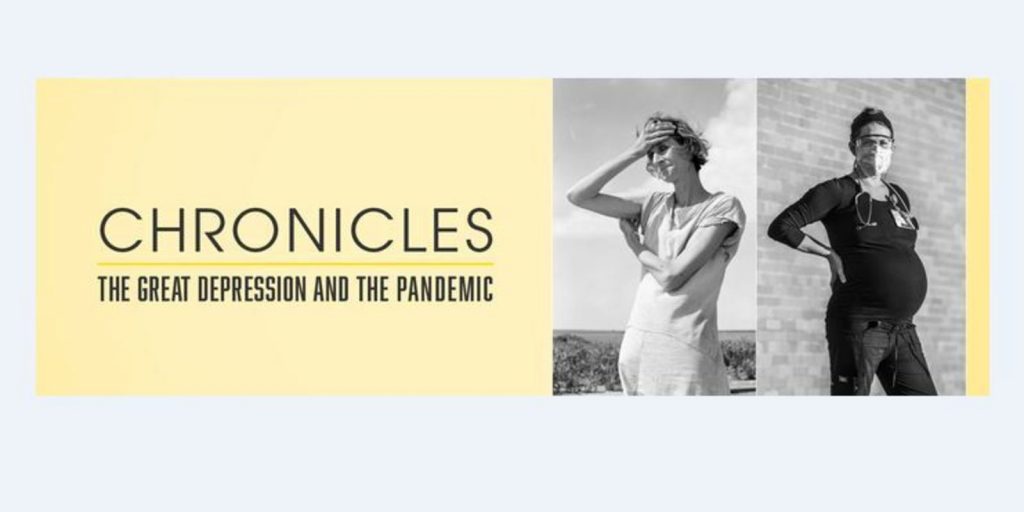Culture
Ohio State University professor Dr. David Steigerwald to lecture on WPA arts and New Deal culture June 19
By: Emily Votaw
Posted on:
Through August 28 the Decorative Arts Center of Ohio (145 E. Main St.) in Lancaster is showcasing images taken by Works Project Administration (WPA) photographers throughout the ‘30s and ‘40s alongside images taken by contemporary photographers over the course of past two years of the COVID-19 pandemic in an exhibition entitled “Chronicles: the Great Depression and the Pandemic.”
As a part of the museum’s exhibition programming, Ohio State University professor of history Dr. David Steigerwald will present a lecture entitled “In Search of America: WPA Arts and New Deal Culture” at 2 p.m. Sunday, June 19.
The New Deal was a broad name given to an even broader set of policies developed by President Franklin D. Roosevelt’s administration to battle the impacts of the Great Depression, among other things that were making it difficult for the country to thrive. Steigerwald said the impact the New Deal had on the country was enormous, given the fact life for the average American prior to the Roosevelt administration was pretty grim.
“It was hard for Americans not to feel the economic crisis, no matter where they were. It wasn’t just a matter of rich people who lost all their money in the stock market and dove out of windows in Manhattan. The average farmer was hurting. Things in the west were compounded by the environmental crisis of the Dust Bowl. There wasn’t really any refuge in the country for Americans to feel safe,” said Steigerwald.
The New Deal encompassed economic policies, banking reform, the National Recovery Act and Administration, and many other policies, but the aspect of the New Deal that the Decorative Arts Center is referencing is the Works Projects Administration (WPA).
“It was hard for Americans not to feel the economic crisis, no matter where they were. It wasn’t just a matter of rich people who lost all their money in the stock market and dove out of windows in Manhattan. The average farmer was hurting. Things in the west were compounded by the environmental crisis of the Dust Bowl. There wasn’t really any refuge in the country for Americans to feel safe.” – Dr. Steigerwald
“The WPA was a two-part employment program, but among other things, the WPA built a lot of public works,” said Steigerwald. “I wouldn’t be surprised if some of the sidewalks you use every day started as WPA projects.”
The impact of the WPA is all around us in 2022, even if we don’t always recognize it as such. Steigerwald said many high school stadiums were WPA projects, as were post offices. The WPA was all about creating work for Americans, including American artists.
“The WPA generated an arts program, which turned out to be an enormously productive and really fertile period in the history of American art – including in the history of American photography,” said Steigerwald. “The WPA touched parts of American culture in such a way that it became the embodiment of what I mean when I speak about ‘New Deal culture,’ but in a broader, more abstract way, New Deal culture was a moment in which American intellectuals and American artists reintroduced themselves to the common folk. And therefore it has a distinctly populist feel to it, and an anti-elitism, as well.”
While the New Deal didn’t fix all of America’s problems, Steigerwald said it’s no small thing that it broadly did improve the lives of so many Americans.
“I think it’s indisputable that there was improvement, modest to be sure. The fundamental problems of the economy still hadn’t been ironed out, but people were helped,” said Steigerwald. “There’s a whole other thing about Roosevelt that has to be accounted for. And it has a lot to do with the arts program. If Roosevelt did nothing else, he provided a sense of calm amidst the storm.”
Dr. Steigerwald will present “In Search of America: WPA Arts and New Deal Culture” Sunday, June 19 at 2 p.m. at the Decorative Arts Center in Lancaster. Attending the event costs $10 for non-members and $15 for members, and you can register for the event at this link.
“Chronicles: The Great Depression and the Pandemic” is on display at the Decorative Arts Center of Ohio through August 28. The Decorative Arts Center of Ohio is open Wednesday through Friday 11 a.m. to 4 p.m. and Saturday and Sunday 1 p.m. to 4 p.m. Admission to the Decorative Arts Center of Ohio is always free.


